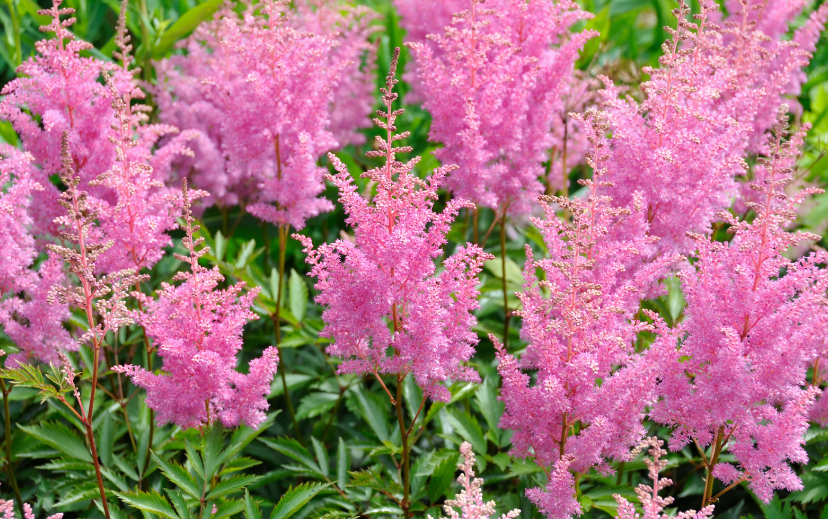Information About Astilbe Plants

The False goat’s beard, or Astilbe, is a perennial that can be planted year-round. Decorative flower plumes in white, pink, or red will rise cheerfully above the ferny foliage.
This plant thrives in moist, boggy conditions alongside ferns, ligularia, and hostas in the cool shade.
You can grow ‘Bressingham Beauty’ up to 1 meter tall, with a lovely pink bloom, or choose dwarf varieties such as ‘Bronze Elegans’ with creamy-pink flowers.
Astilbe consists of 25 species and hundreds of hybrids. While some have arching stems, others have erect stems.
In most cases, astilbe flowers are pastel, ranging from white to deep purple. The blooming times and heights of different varieties vary as well.
The height of an astilbe flower can vary from a few inches (7.5-10 cm) to a few feet (1 m). You will be rewarded with their spiky blossoms (in a variety of heights) throughout the summer if you do your research.
The right astilbe plant information can distinguish between a large, fully developed bloom and one stunted or exhibiting leaf browning and dieback.
It is vital to provide the suitable soil, food, and location for astutebe plants to thrive. Learn how to grow astilbes so that they grow abundantly.
Astilbes Growing
- Although astube plants grow in the shade, their flowers are more productive in an area with morning or dappled sunlight for a few hours.
- Astilbe flowers also need suitable soil and moisture to flourish. Astubes prefer rich, organic soil.
- The compost enriches the soil and improves drainage. Work compost into the soil before planting your plants in shady, lean, or rocky areas.
- It is crucial to give astilbe roots plenty of room to grow, so amend the soil 8 to 12 inches (20-30 cm.) deep.
- Plant the astilbe plants in the soil, keeping the crown at the same level as the soil. Make sure the soil is consistently moist when planting.
Care for Astilbe Plants
It is relatively easy to grow Astilbes, but they require adequate water to thrive.
Without consistently moist soil, they’ll suffer. So be sure to plant in soil with plenty of organic matter that is well drained.
Moisture-loving plants can stay happy and healthy by amending the soil with compost and peat moss.
Astilbes are relatively versatile when it comes to light. Depending on the variety, they can tolerate full sun to almost total shade.
Throughout the growing season, astilbes need adequate water in full sun. Astilbes’ leaves will brown and curl if the soil dries out.
Astilbe plants can die from drying out due to leaf scorch, dry margins, and leaf scorch.
Using the right fertilizer and growing astilbes in the right conditions produces large feathery plumes.
A phosphorus-rich organic fertilizer or compost can also be used occasionally.
For winter interest, spent plumes can be cut back or left alone in spring. Every four years, they can also be divided if necessary.
Astilbe plants can grow delicate, long-lasting blooms in the spring and summer garden with proper care.
There is astilbe in every shade garden. When a gardener falls in love with growing and caring for these plants, one astilbe is often not enough.

























